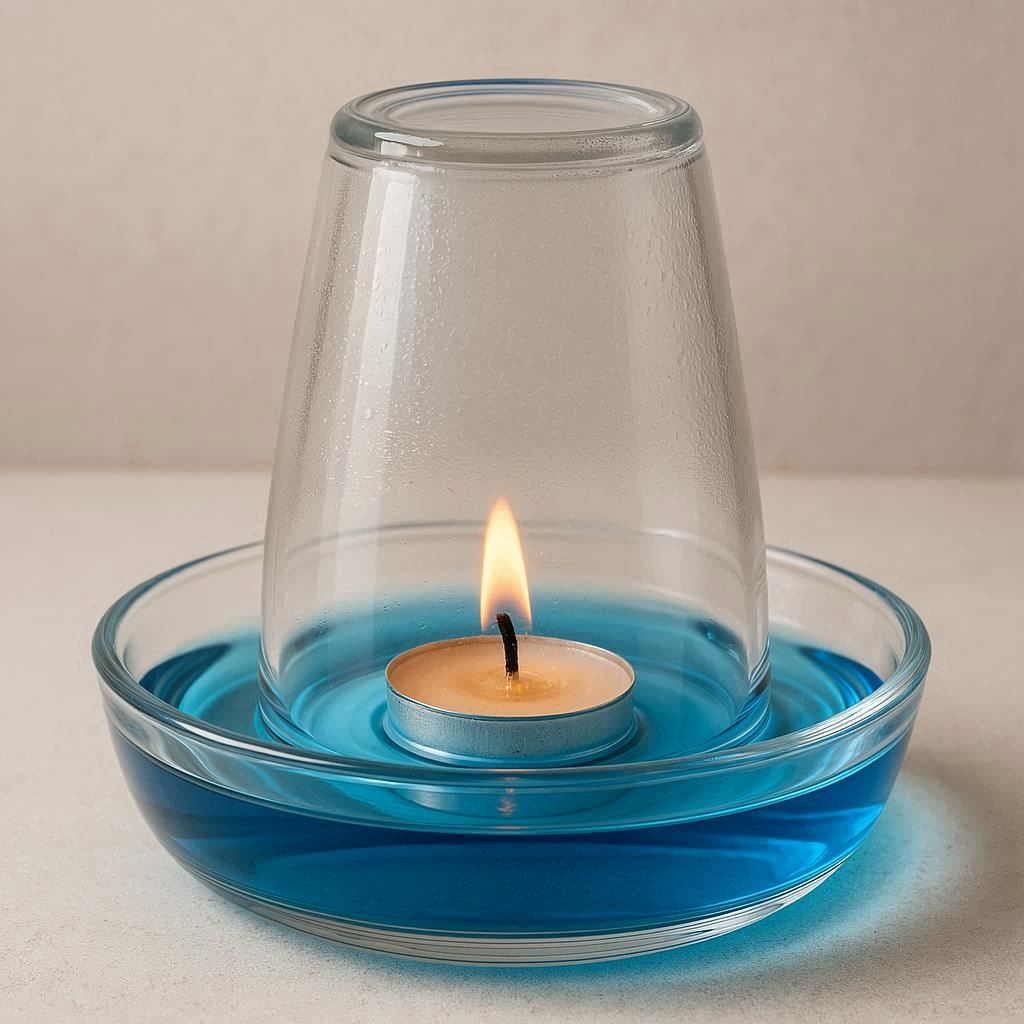Introduction
Fire and water are two elements that are often seen as opposites – one represents heat and destruction, while the other symbolizes life and tranquility. But what happens when these two forces meet in a unique and fascinating way? Enter the underwater candle trick, a mesmerizing experiment that has captured the attention of scientists and magic enthusiasts alike. In this blog post, we’ll dive into the science behind this incredible phenomenon, explore how it works, and even share some tips on how you can try it at home.
The Science Behind the Underwater Candle Trick
Before we dive into the details of performing the trick, it’s essential to understand the science that makes it possible. The underwater candle trick relies on a combination of air pressure, buoyancy, and the properties of combustion.
What You Need
Here’s a list of materials you’ll need to perform the underwater candle trick at home:
- A tall, clear glass or container
- Water
- A tea light or small candle
- A plate or tray
- Matches or a lighter
- Optional: Food coloring for added visual effect
Step-by-Step Guide to Performing the Trick
- Prepare the Setup: Begin by filling the tall glass with water, leaving about an inch at the top. If you’re using food coloring, add a few drops to the water for a more vibrant effect.
- Light the Candle: Place the tea light or small candle on the plate or tray and light it. Allow the candle to burn for a few minutes to ensure the wax is fully melted and the wick is burning steadily.
- Submerge the Candle: Carefully place the burning candle into the water, ensuring that the flame remains above the surface. You’ll notice that the flame continues to burn, even though it’s partially submerged.
- Observe and Enjoy: Watch as the candle burns underwater, creating a mesmerizing display of light and water. The flame will eventually extinguish once the oxygen supply is depleted.
Why Does This Work?
The underwater candle trick works due to the principles of air pressure and buoyancy. When you place the burning candle into the water, the heat from the flame creates a layer of warm air above the water’s surface. This warm air is less dense than the surrounding water, causing it to rise and create a pocket of air around the flame. This pocket of air sustains the flame, allowing it to continue burning even while partially submerged.
Common Questions About the Underwater Candle Trick
- Is the underwater candle trick dangerous?
Like any experiment involving fire, there is some risk involved. However, as long as you follow proper safety precautions and use caution, the trick is relatively safe. - Can I use a regular candle instead of a tea light?
While a regular candle can work, a tea light is preferred because it’s smaller and burns more evenly, making it easier to submerge and control. - How long will the candle burn underwater?
The length of time the candle burns depends on the size of the candle and the amount of oxygen available. Typically, a tea light will burn for several minutes before extinguishing.
Tips for Performing the Trick
- Use a Clear Glass: A clear glass or container allows you to see the flame and the water clearly, enhancing the visual effect.
- Adjust the Water Level: Experiment with different water levels to see how it affects the flame. Lower water levels will allow the flame to burn longer, while higher water levels will cause the flame to extinguish more quickly.
- Add a Few Drops of Oil: Adding a few drops of oil to the water can create a colorful, swirling effect as the candle burns.
- Practice Makes Perfect: Like any trick, practice makes perfect. Don’t be discouraged if it takes a few tries to get the desired effect.
The Magic of Combustion
Combustion is the process by which a substance reacts with oxygen to produce heat and light. In the case of the underwater candle trick, the flame continues to burn because the warm air above the water’s surface creates a pocket of oxygen that sustains the combustion process.
The Role of Buoyancy
Buoyancy plays a crucial role in the underwater candle trick. The warm air rising from the flame creates a pressure difference that prevents the water from extinguishing the flame. This principle is the same one that allows hot air balloons to float in the sky – the buoyant force of the warm air counteracts the weight of the object.
The Physics of Flame
The flame itself is a fascinating phenomenon. When a candle burns, the wax melts and vaporizes, creating a mixture of hydrocarbons that ignite when they come into contact with oxygen. The color of the flame is determined by the temperature – a hotter flame burns blue, while a cooler flame burns yellow or orange.
The Art of Fire and Water
The underwater candle trick is not only a scientific experiment but also a form of art. The combination of fire and water creates a visually stunning display that can be both captivating and thought-provoking. It’s a reminder that even in the most unlikely of situations, the forces of nature can come together to create something truly remarkable.
Conclusion
In conclusion, the underwater candle trick is a fascinating and simple experiment that demonstrates the principles of air pressure, buoyancy, and combustion. With just a few basic materials, you can create a mesmerizing display of fire and water that will leave your audience in awe. Whether you’re a science enthusiast or just looking for a fun and educational activity, the underwater candle trick is sure to impress.
So next time you’re looking for a unique way to explore the properties of fire and water, give the underwater candle trick a try. With a little practice and patience, you’ll be able to create a truly magical experience that will leave everyone wondering – how is this possible?
Final Thoughts
The underwater candle trick is a perfect example of how science can be both educational and entertaining. It’s a great way to spark curiosity and inspire a love of learning in people of all ages. So go ahead, gather your materials, and give it a try. Who knows – you might just discover a new passion for the wonders of fire and water.


